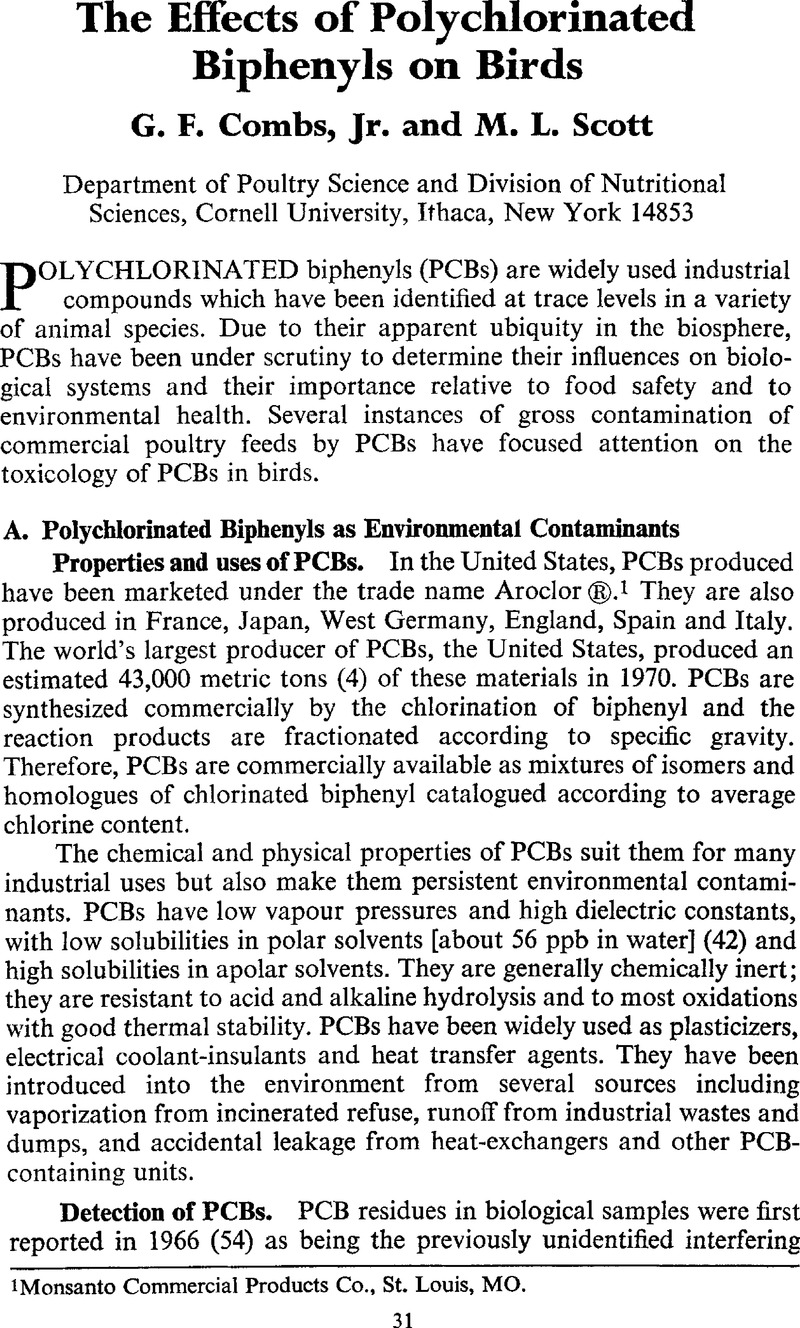Crossref Citations
This article has been cited by the following publications. This list is generated based on data provided by Crossref.
Bains, B.S.
and
Watson, A.R.A.
1978.
Nutritional myopathy — a cause of ataxia in broiler chickens.
New Zealand Veterinary Journal,
Vol. 26,
Issue. 1-2,
p.
31.
Debackere, M.
1983.
Veterinary Pharmacology and Toxicology.
p.
595.
Heeschen, W.
and
Blüthgen, A.
1983.
Veterinary Pharmacology and Toxicology.
p.
609.
Wiemeyer, Stanley N.
Lamont, Thair G.
Bunck, Christine M.
Sindelar, Charles R.
Gramlich, Francis J.
Fraser, James D.
and
Byrd, Mitchell A.
1984.
Organochlorine pesticide, polychlorobiphenyl, and mercury residues in bald eagle eggs?1969?79?and their relationships to shell thinning and reproduction.
Archives of Environmental Contamination and Toxicology,
Vol. 13,
Issue. 5,
p.
529.
Stickel, William H.
Stickel, Lucille F.
Dyrland, Russell A.
and
Hughes, Donald L.
1984.
Aroclor 1254� residues in birds: Lethal levels and loss rates.
Archives of Environmental Contamination and Toxicology,
Vol. 13,
Issue. 1,
p.
7.
Brunström, Björn
1989.
Toxicity of coplanar polychlorinated biphenyls in avian embryos.
Chemosphere,
Vol. 19,
Issue. 1-6,
p.
765.
Custer, T. W.
Sparks, D. W.
Sobiech, S. A.
Hines, R. K.
and
Melancon, M. J.
1996.
Organochlorine accumulation by sentinel mallards at the Winston-Thomas sewage treatment plant, Bloomington, Indiana.
Archives of Environmental Contamination and Toxicology,
Vol. 30,
Issue. 2,
p.
163.
Hamilton, Andrew J.
2007.
Potential microbial and chemical hazards to waterbirds at the Western Treatment Plant.
Ecological Management & Restoration,
Vol. 8,
Issue. 1,
p.
38.



